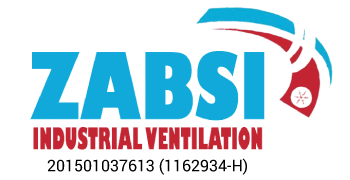Case Studies: Successful Implementation of LEV Systems in Various Industries
-
Automotive Industry: Welding Fumes Control In an automotive manufacturing plant, workers were frequently exposed to welding fumes, leading to health issues and decreased productivity. By implementing an LEV system with strategically placed hoods and high-efficiency particulate air (HEPA) filters, the plant significantly reduced airborne contaminants. This resulted in a healthier work environment and compliance with occupational safety regulations.
-
Pharmaceutical Industry: Containment of Hazardous Chemicals A pharmaceutical company dealing with volatile organic compounds (VOCs) installed an LEV system to prevent the release of hazardous chemicals during the manufacturing process. The system included specialized hoods and scrubbers to capture and neutralize VOCs. The implementation led to a safer work environment and reduced environmental impact, meeting stringent industry standards.
-
Woodworking Industry: Dust Collection and Control A furniture manufacturing facility faced issues with wood dust, which posed respiratory risks and fire hazards. By installing an LEV system with custom-designed hoods and dust collectors, the facility effectively captured dust at the source. This improvement enhanced worker safety, reduced cleanup time, and minimized fire risk.
-
Chemical Industry: Fume Extraction in Laboratories A chemical research lab required a solution for handling toxic fumes generated during experiments. An LEV system with flexible ducting and local extraction arms was implemented to capture fumes directly at the workbenches. This system improved air quality, protected researchers, and ensured compliance with safety regulations.
-
Metalworking Industry: Grinding and Polishing Operations A metal fabrication shop experienced high levels of metal dust and particles during grinding and polishing operations. By integrating an LEV system with adjustable hoods and centrifugal fans, the shop effectively controlled dust emissions. The result was a cleaner workspace, extended equipment life, and improved worker health.
-
Food Processing Industry: Control of Odors and Particulates A food processing plant faced challenges with airborne particulates and odors from various production processes. Installing an LEV system with hoods and activated carbon filters helped capture and neutralize odors and particulates. This implementation improved air quality, enhanced worker comfort, and met food safety standards.
-
Printing Industry: Ink Mist and Solvent Vapor Control A printing company dealing with ink mists and solvent vapors implemented an LEV system with specialized capture hoods and solvent-resistant ducting. The system effectively captured and removed harmful vapors, resulting in a safer work environment and compliance with environmental regulations.
-
Textile Industry: Fiber and Dust Control A textile manufacturing facility struggled with airborne fibers and dust, affecting both worker health and product quality. An LEV system with strategically placed hoods and high-efficiency filters was installed, capturing fibers and dust at their source. This led to improved air quality, better product quality, and reduced health risks.
-
Aerospace Industry: Composite Material Handling An aerospace manufacturing plant working with composite materials implemented an LEV system to control dust and fumes generated during cutting and sanding operations. The system included hoods, HEPA filters, and powerful exhaust fans. This implementation ensured worker safety, maintained product quality, and met stringent industry regulations.
-
Electronics Industry: Solder Fume Extraction An electronics assembly facility needed to address solder fumes produced during the soldering process. An LEV system with local extraction arms and activated carbon filters was installed to capture and filter out harmful fumes. This led to a healthier work environment, reduced health risks, and compliance with safety standards.
05 Jun 2024










